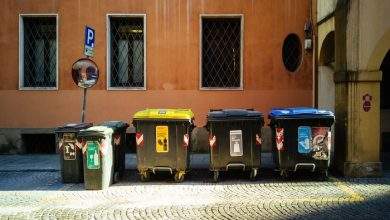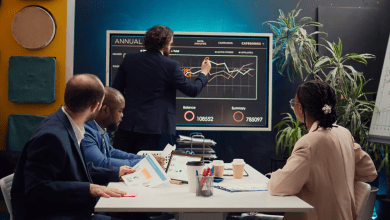
The UK’s digital economy is booming — and with it, so is our mountain of discarded electronics. From obsolete laptops and servers to old smartphones, routers, and industrial control systems, electronic waste (e-waste) is now one of the fastest-growing waste streams in the world.
For UK businesses, this growth brings both risk and opportunity. Mishandle e-waste, and you face compliance issues, data security threats, reputational damage, and unnecessary environmental impact. Manage it well, and you can recover value from materials, strengthen your ESG story, and demonstrate responsible stewardship to customers, investors, and regulators.
This is where having a trusted, specialist recycling partner stops being “nice to have” and becomes mission-critical.
Why E-Waste Is a Business Issue — Not Just a Facilities Problem
According to the UN’s Global E-waste Monitor, the world generated over 62 million tonnes of e-waste in 2022, with only about 22% officially documented as properly collected and recycled. The UK consistently ranks among the highest e-waste producers per capita in Europe.
For businesses, this is not just an environmental statistic. E-waste touches several core areas of risk and responsibility:
- Regulatory compliance: UK businesses must comply with WEEE regulations and broader environmental legislation. Improper disposal can result in fines and enforcement action.
- Data security: End-of-life devices often contain sensitive client data, intellectual property, and operational information. Physical destruction and certified data sanitisation are crucial.
- Corporate reputation: Stakeholders increasingly expect evidence of responsible resource use and waste management. A visible e-waste strategy supports ESG objectives.
- Cost and efficiency: Storing obsolete equipment “just in case” ties up storage space and working capital. Smart recycling can recover value and streamline operations.
In other words, e-waste is no longer something that can be solved by asking “someone in facilities” to call a general waste contractor. It demands specialist expertise, traceability, and a structured approach.
The Shift from “Disposal” to Circular Resource Management
One of the biggest changes in how UK businesses handle electronics is the move from simple disposal to circular thinking. Instead of viewing end-of-life equipment as rubbish, leading organisations now see it as a resource that can be:
- Repaired, refurbished, and reused
- Harvested for components
- Recycled for critical raw materials
This is especially important given increasing global demand for metals used in electronics: copper, aluminium, precious metals, and various critical elements. Recovering these from your redundant equipment reduces the need for virgin mining and helps stabilise long-term supply.
Specialist e wasteng providers play a central role here. They don’t just take equipment away; they:
- Assess which assets can be refurbished or resold
- Maximise recovery of reusable components
- Use advanced processes to safely extract metals and other materials
- Provide reporting, certification, and traceability for ESG and audit purposes
This transforms what used to be a compliance cost into a managed, value-generating process that supports your sustainability targets.
Why a “Trusted Partner” Matters More Than Ever
Not all recyclers are created equal. In a market under pressure from rising e-waste volumes and material prices, it can be tempting to choose the cheapest provider. But for businesses handling sensitive data and regulated equipment, that’s a risky strategy.
A trusted e-waste and scrap metal recycling partner should demonstrate:
1. Proven Compliance and Certifications
Look for clear evidence of:
- Compliance with UK WEEE regulations and environmental law
- Relevant environmental and quality certifications (e.g., ISO standards)
- Documented policies on health, safety, and environmental protection
Certifications are not just badges; they indicate robust processes, auditable controls, and a culture of continuous improvement.
2. Robust Data Security and Chain of Custody
When IT assets leave your premises, you remain responsible for the data they contain. Your partner should provide:
- Secure logistics and storage
- Certified data destruction (physical shredding and/or software wiping)
- Audit trails, serial number tracking, and destruction certificates
Without this, a discarded hard drive or server could become a major data breach story linked directly back to your brand.
3. Advanced Material Recovery Capabilities
The value in e-waste isn’t just in whole devices — it’s in the components and metals they contain. Trusted partners invest in:
- Specialised processing for printed circuit boards and IT equipment
- Segregation and upgrading of non-ferrous metals
- Partnerships with reputable refineries and downstream processors
This ensures maximum recovery of value from your end-of-life equipment, with transparent pricing and reporting.
4. Transparency, Reporting, and Support
Sustainability and ESG teams increasingly need hard data — not just good intentions. A serious recycling partner will provide:
- Detailed reports on weights, materials recovered, and destinations
- Certificates for destruction and recycling
- Support for internal ESG reporting and external audits
This converts your e-waste programme into measurable performance that you can confidently share with stakeholders.
Common E-Waste Challenges UK Businesses Face — And How To Solve Them
Challenge 1: Fragmented Responsibility
IT, facilities, procurement, compliance, and sustainability teams often share overlapping responsibility for e-waste — which means no one truly owns it.
Solution: Appoint a clear internal lead (often within IT or sustainability) and work with a recycling partner that understands how to engage multiple stakeholders. A good partner will help you design a simple, standardised process that everyone can follow.
Challenge 2: “We’ll Keep It, Just In Case” Storage
Many organisations have storerooms filled with obsolete kit “just in case” it might be useful. In reality, these assets are depreciating while taking up valuable space and posing data risk.
Solution: Implement regular asset disposition cycles — for example, annually or after major IT upgrades. A structured programme with a trusted recycler turns ad hoc clearance into a controlled business process with predictable outputs and documentation.
Challenge 3: Uncertainty About Value
Businesses often underestimate the recoverable value in end-of-life equipment, especially when it comes to metals in PCBs, cabling, and other components.
Solution: Work with a partner who can assess material value transparently, explain pricing structures, and provide clear returns where appropriate. Over time, this can contribute a small but meaningful revenue stream that offsets disposal costs.
Integrating E-Waste and Metal Recycling into Your ESG Strategy
As ESG reporting becomes more sophisticated, stakeholders expect more than generic statements about “reducing waste”. They want to see:
- Evidence of responsible resource use and circularity
- Concrete metrics on waste diverted from landfill
- Examples of partnerships that support sustainability in practice
By working with a specialist in e-waste and non-ferrous metal recovery, you can:
- Quantify how much material you recycle each year
- Demonstrate reductions in environmental impact compared to landfilling or incineration
- Show that you’re contributing to circular economy goals by returning valuable metals to the production cycle
This turns a former back-office issue into a visible, positive contributor to your wider ESG narrative.
Choosing the Right Partner for the Next Decade of E-Waste
The volume and complexity of e-waste will only increase as businesses adopt AI infrastructure, IoT devices, and ever-more sophisticated IT systems. Choosing the right recycling partner now is an investment in resilience, compliance, and sustainability for the long term.
When evaluating potential partners, ask:
- Can they handle both general IT equipment and specialist electronics?
- Do they have demonstrable expertise in secure, compliant processing?
- How do they maximise value recovery from metals and components?
- Can they provide the documentation and reporting our auditors and stakeholders will expect?
A partner that combines secure e waste recycling with advanced scrap metal recycling capabilities is well placed to support UK businesses as regulations tighten and expectations rise.
Taking the Next Step
E-waste is no longer an afterthought. It’s a core operational, compliance, and ESG issue for UK companies across every sector. By moving from ad hoc disposal to strategic, partnership-led recycling, businesses can:
- Protect data and meet regulatory obligations
- Recover value from materials and equipment
- Demonstrate genuine commitment to sustainability and the circular economy
If your organisation is still treating e-waste as “general rubbish” or storing obsolete devices in cupboards and containers, now is the time to review your approach. A conversation with a specialist recycling partner can help you map out a compliant, efficient, and future-ready solution that turns a potential liability into a managed asset.
In a world where technology cycles are getting shorter and environmental expectations are rising, trusted recycling partnerships are not just a good idea — they’re a strategic advantage.




